
How to Get Rid of House Mice
In this article, you will learn how to get rid of house mice. To do this, it is important that you understand mouse nests, what mice eat, and how they differ from young rats.
With proper identification and inspection, your house mice removal control will be successful and prevent further infestations from occurring in your home.
December 16th, 2023
How to Get Rid of House Mice

While having house mice is never a pleasant thing, getting rid of them does not have to be difficult. You can get rid of house mice successfully and safely with the correct supplies and assistance.
An inspection should be the first step in your house mouse control treatment plan. After that, make a note of any mouse droppings or mouse nests you see so you can successfully place baits and traps.
Get Rid Of House Mice with Mouse Traps & Baits
After a thorough rodent inspection, place mice traps or rodent bait near nests and poop trails to control and get rid of mice.
Mouse Traps
Traps are the quickest method to get rid of house mice. it's a good idea to set up a variety of traps. Ensure you regularly check the traps and dispose of dead mice to prevent further infestations. Glue traps are an inhumane method for getting rid of mice in the house.
Wooden snap traps are ideal for minor mouse infestations and ensure that the mice are gone for good. Snap traps are the cheapest method to get rid of house mice, and you can use them again or throw them away. Peanut butter, bacon, and dried goods can be used to bait traps.
House Mouse Baits
Bait stations are sealed packets containing poison meals or pellets that are designed to kill mice. Mice may quickly gnaw through plastic, paper, cellophane, or other material used to contain these packages. This will kill mice upon consumption.
This quick and effective solution should be monitored and kept away from children and pets.
We recommend using a bait blox in a baiting program with a rod to lure mice. A Mouse Protecta Bait Station will ensure the house mice don’t carry the bait off and store pellets for later consumption. It will not frighten the mice either - this can cause them to spray urine and spread further disease.
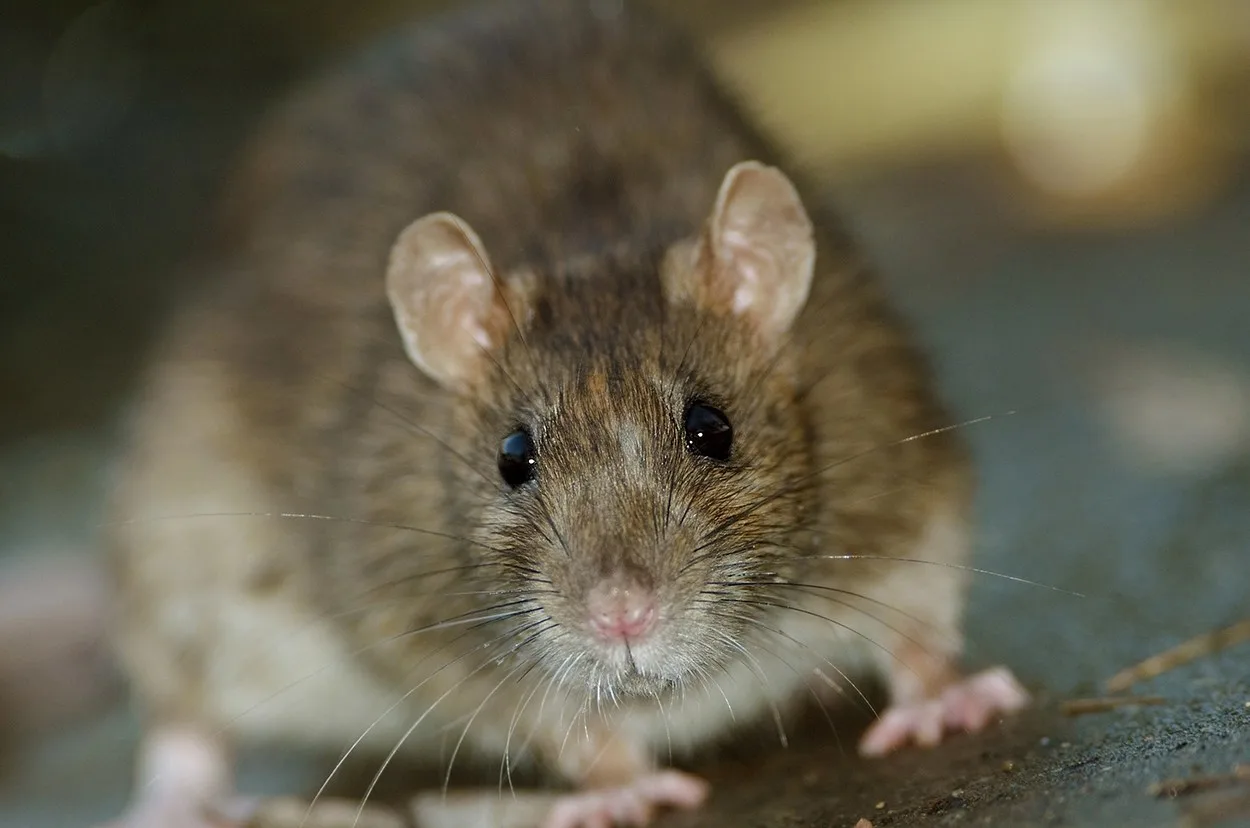
Key Takeaway
Whether using traps or baits, remember that mice don't usually travel far from their nest. Places baits or traps near areas of known activity.
Identify
For effective house mice removal and control, make sure you understand how these pests behave, what they eat, and when they are most active.Identification is the first step in determining if you have a house mouse problem.
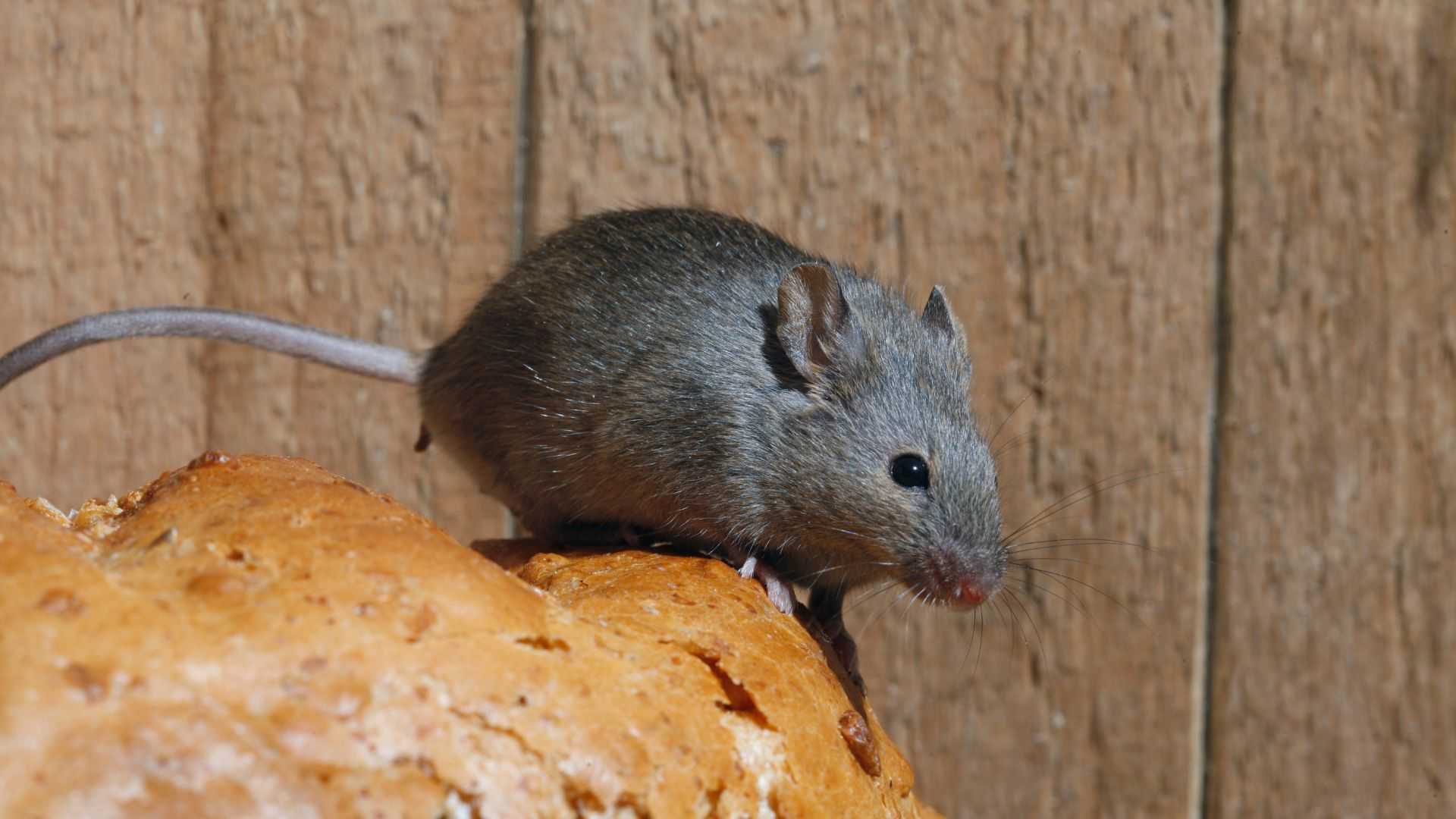
What are House Mice?
The house mouse is the most widespread animal on the planet. These pests are native to Central Asia and arrived on the First European ships to America. Now, they reside in every North American state. House mice have a far greater population number than rats.
You may encounter other rodents, like the deer mouse as well, but it is found outdoors much more often than indoors. Deer mice are known to carry the deadly Hantavirus, which can cause serious respiratory harm if left untreated.
What Do Mice Look Like?
Adults are small and thin, weighing between 0.5 and 1 ounce. Their tails are long, slender, furry, and coated with scales, while their ears are huge and practically hairless. With white tints, their fur is light brown or grey. Mice in captivity may live for up to two years, whereas wild mice only survive for nine to 18 months.
Mice are extremely nimble and agile creatures. They can jump up to twelve inches and have outstanding skills for smell and touch. Despite their poor eyesight, house mice have excellent peripheral vision at detecting movement and this makes them tough to catch.
House Mice Habits and Biology
A characteristic musky odor can identify house mice. Mice nibble on food all day long. They eat many times and eat at different locations. However, they do have two main meal times, just before dusk and just before dawn. Mice can be seen during the daylight hours but are active mostly at night.
They can eat about 10 to 15% of their body weight every day, the adults weighing about 5/8-1 oz. They have strong, powerful teeth that allow them to gnaw through plastic and rubber packaging. Even in the most secure containers, house mice are adept at gnawing away and accessing the nutrient-rich food inside.
House Mice Diet
House mice prefer seeds, cereal grains, or sweets but will eat almost anything. When inside, house mice love pet food, fruits and vegetables, and any other organic produce. Mice will store food if there is a surplus, making homes even more attractive for them to infest.
Mice do not need much water; they get most of their water requirements from their food. Farms and granaries are often infested with mice as they eat large quantities of stored seeds and grains.
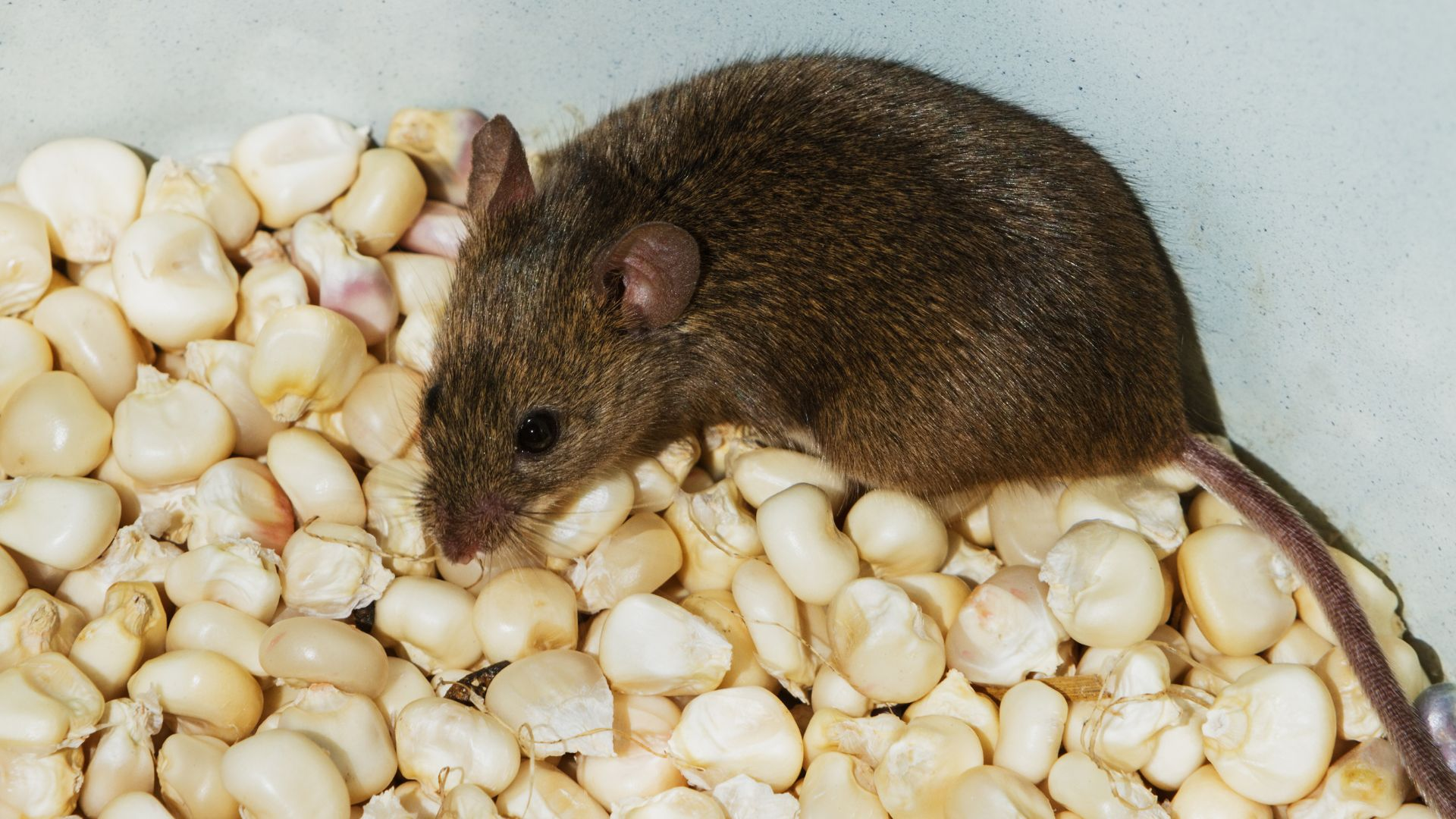
House Mice Inspection
When inspecting your property for house mice, it’s a good idea to wear personal protective equipment. Opt for a face mask and a pair of gloves to protect you from any pathogens the house mice or mouse droppings may be harboring.
Not only can house mice gnaw through walls and ruin food packaging, but they also spread a variety of diseases that are harmful to human health. House mice contain bacteria that can aggravate allergies and asthma in anybody living in the house.
Difference Between a Young Rat and a Mouse
Before beginning your inspection, it’s a good idea to understand the differences between a house mouse and a young rat. People often confuse a mouse with a young brown rat. House mice are smaller and span 1.5 to 4 inches long, while young rats are much larger in appearance.
Young rats have larger feet, smaller ears, and longer tails. House mice have a slender, evenly shaped frame. Although it may be difficult to tell the difference, it will become much easier with the age of the rodent.

Mouse Droppings Inspection
Be on the lookout for possible mouse droppings. Mouse droppings and mouse urine are clear indicators that you have rodents inside your home. You can also use droppings as a way to identify between house mice and young rats. Rat droppings are very glossy and range in length from 1.27 to 1.9 cm, whereas mouse droppings are smaller, softer, and have sharp edges.
Mouse droppings are rod-shaped and look very similar to dark grains of rice. House mice droppings are about 1/8-1/4 inch long. It is common to see trails of feces pellets around entry points inside the home as well as inside cupboards, shelves, and drawers.
Mice Nest Inspection
A mouse nest is a clear sign that you have a mouse infestation inside your home. Therefore, try your best to determine where the mice are living and building nests inside. This will help you place mouse traps and baits effectively and quickly eliminate your pest problem.
When mouse populations expand, so too will the number of mouse nests. The purpose of a mouse nest is to give birth to and raise its young. They prefer soft materials such as shredded paper and cotton.
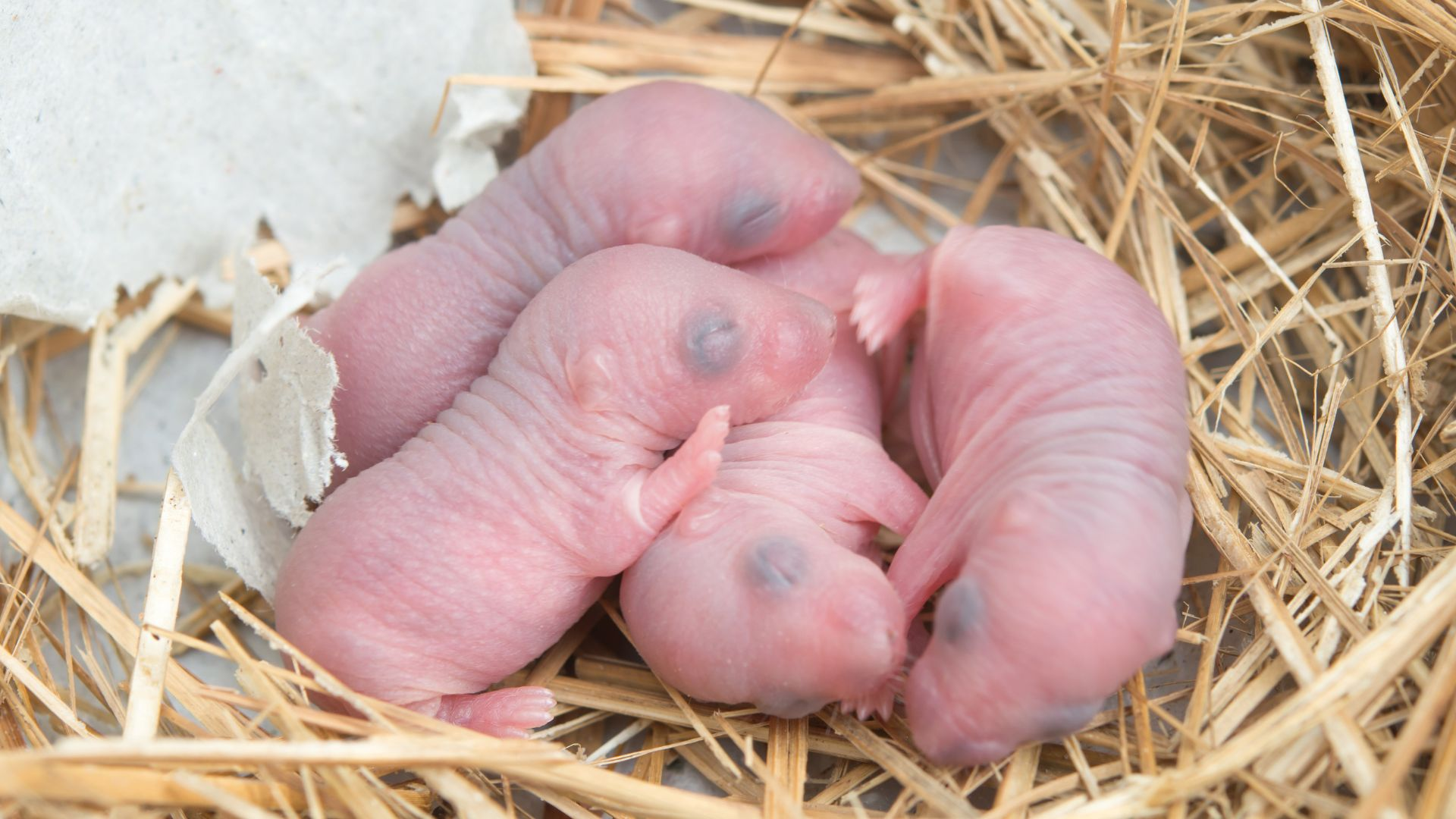
How Many Mice Live in a Nest?
Typically, between a dozen and two dozen mice live in one nest, but there may be fewer depending on conditions within the home. A single litter usually consists of at least 6 pups.
A mouse nest is typically made from insulation, paper, furniture stuffing, pet hair, and anything else they can get their paws on.Female mice nest where they can provide a safe area and comfortable area for their litter.
How To Find a Mouse Nest
To find a mouse nest, try looking under sheltered places that are undisturbed. Look for areas that are close to water and food sources, undercover, and warm, as these all attract mice. Good nests are important to the reproductive success and survival of mice. These rodents do not go far from the mouse nest.
If inspecting for a mouse nest in the house, look inside wall voids, closets, ceilings, and cabinet voids, within large appliances (under refrigerators or ovens), storage boxes, drawers, or even within the upholstery. Mice breed in all these areas. Outside, a nest is constructed underneath the ground in burrows or debris.
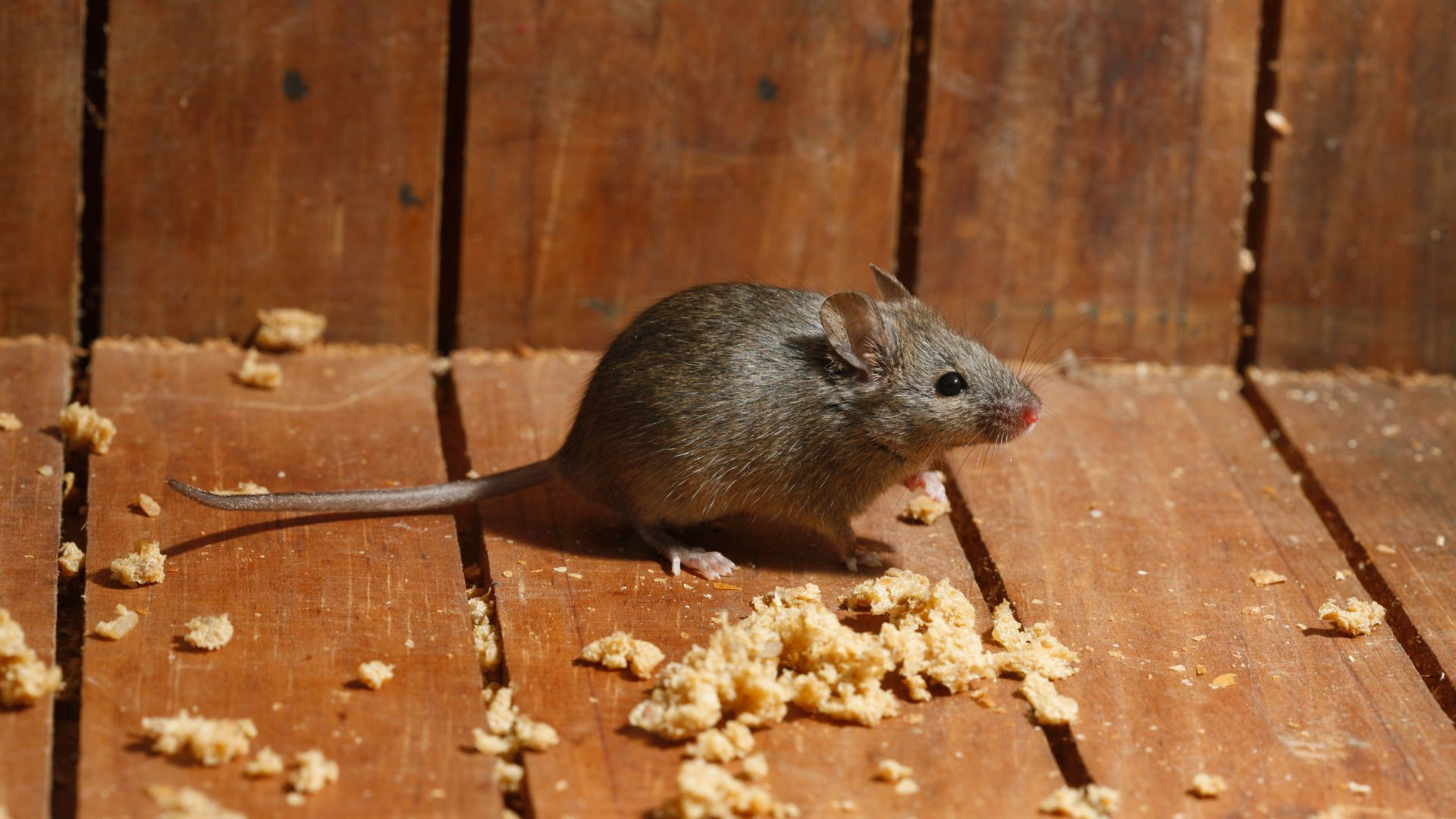
Top Tips for House Mouse Inspection
If you want to keep mice out of your house, there are several places you should inspect to effectively get rid of them. House mice will gnaw on nearly anything in their proximity, including bar soap.
-
Look out for trails of mouse droppings or mouse urine. These can be found within tunnels, behind sinks, behind cabinets, or in-room corners.
-
Check all warm and sheltered places for mouse nests. Fabrics, shredded paper, pet hair, twine, or other soft, shredded material are used to make nests
-
Inspect your pantry for food crumbs, debris, or gnaw marks on food packaging and containers.
-
Check your floors for tiny scratch marks.
-
At night, you may hear scratching or squeaking in the walls.
-
Barking, scratching, or pawing at or beneath appliances may indicate your pets are aware of a pest problem before you are.
How to Keep Mice Out of Your House
A house mouse can squeeze through openings as small as 1/4 an inch. If you want to prevent a future mouse infestation, eliminate all entry points in your home. You can use steel wool and caulk to close entry points as mice cannot gnaw through.
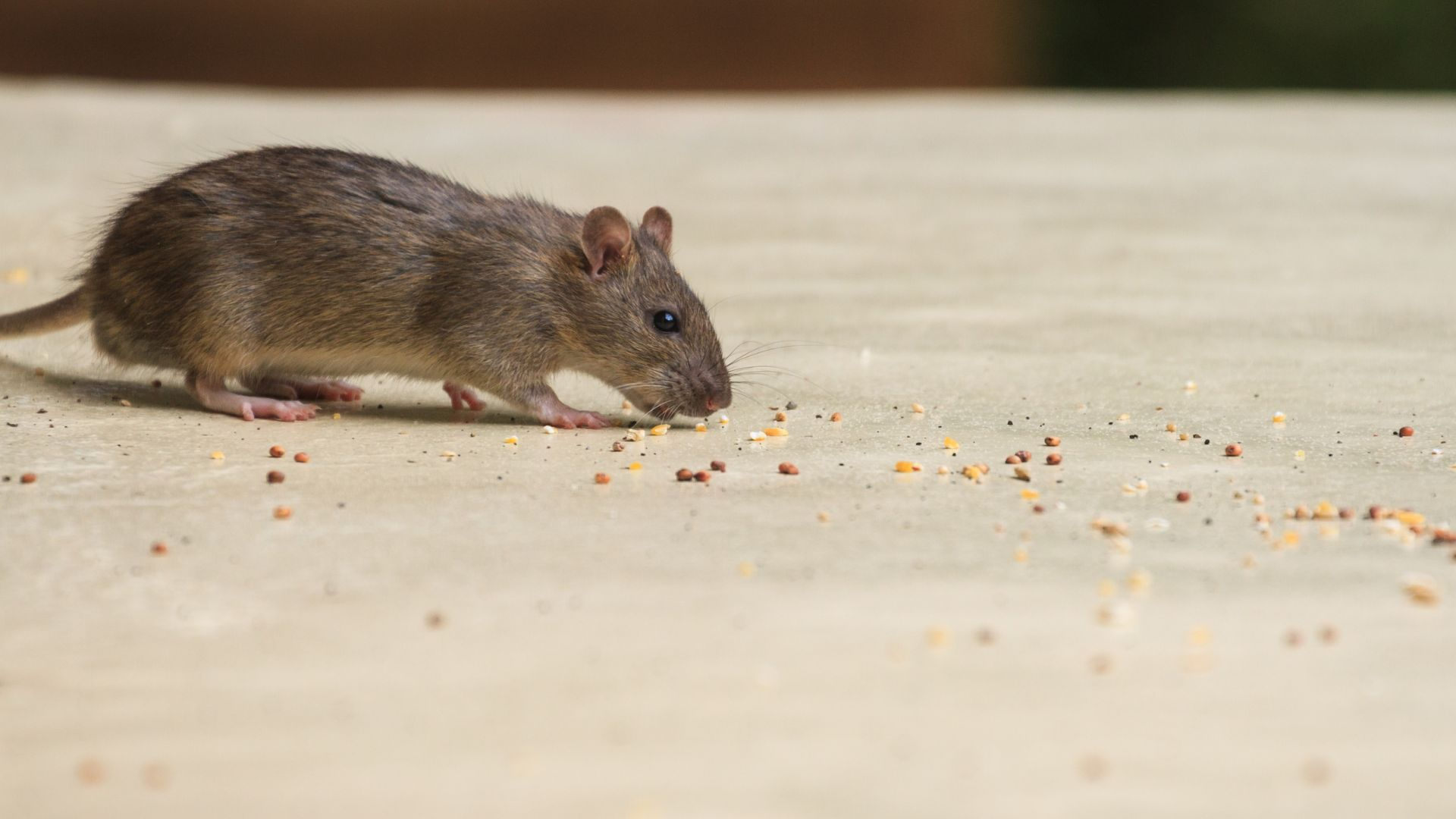
Check Around All Potential Entryways
Check the weather stripping around windows, doors, and underfloor foundations. Cover vents, chimney holes, and any other gaps with strong wire screens. Consider adding door sweeps to all outside doors and replacing any screens that are broken.
Prevent the mice from building nests and remove all possible nesting materials. Ensure all clothes, blankets, and rugs are stored in durable plastic storage containers. Avoid leaving any cardboard and plastic recycling lying around for too long - these are also used to make nests.
Top Tips to Prevent a Mouse Infestation
-
Seal any openings larger than 1/4 inch to repel mice.
-
House mice frequently find their way into homes during the fall when outdoor temperatures at night become colder.
-
Eliminate all openings through which mice can enter a structure. Seal openings and cracks around structure foundations. Seal openings around utilities, vents, and pipes.
-
Doors, windows, and screens should fit tightly.
-
Mouseproof all stored, processed, or used food. Store meat and grains in glass jars, resealable airtight containers, or metal canisters.
Key Takeaway
Eliminate all possible entry points for house mice to enter your home, particularly near weather stripping. Keep any loose fabric and soft materials inside heavy-duty storage containers to prevent mice nests.
House Mouse Control
How to get rid of house mice, mouse nests, and understand what do mice eat.
About House Mice
Since mice have a higher population number than rats, they are more widespread.
House Mice Diet
A mouse prefers seeds, cereal grains, or sweets but will eat almost anything. Mice do not need much water; they get most of their water requirements from their food. Farms and granaries are often infested with mice as they eat large quantities of stored seed and grains.
House Mice Habits and Biology
A characteristic musky odor can identify house mice. Mice nibble on food all day long. They eat many times and eat at different locations. However, they do have two main meal times, just before dusk and just before dawn. They can eat about 10 to 15% of their body weight every day, the adults weighing about 5/8-1 oz. Mice also cache food as supply permits. They get much of their water from food products. Mice can be seen during the daylight hours but are active mostly at night.
Use Mice Traps or Baits to Get Rid Of House Mice

After a thorough rodent inspection, use mice traps or rodent bait to control and get rid of mice. They tend to store food. It is best to use a bait blox in a baiting program with a rod in a Mouse Protecta Bait Station, so they don't carry the bait off for storage(such as pellets) for later consumption. Place rodent baits or traps close to suspected activity.
Key Takeaway
Whether using traps or baits, remember that mice don't usually travel far from their nest. Places baits or traps near areas of known activity.
Difference Between a Young Rat and a Mouse
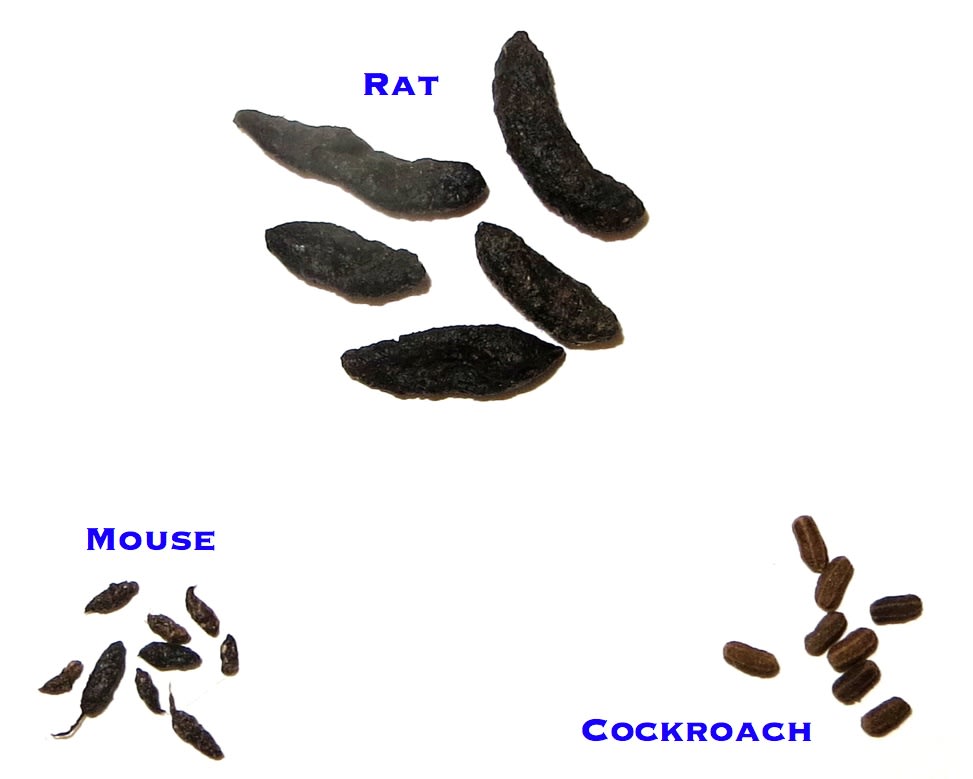
House Mouse Inspection
Mice Nest
Under favorable conditions(shelter and food sources, mice populations can expand and form mice nests.
These nests are made from insulation, paper, furniture stuffing, and other soft material.
The mice nests are found in various locations close to food and water. Good nests are important to the reproductive success and survival of mice. The mice do not go far from their nests.
In buildings, these nests can be found in walls, closets, ceiling and cabinet voids, within large appliances (under refrigerators or ovens), storage boxes, drawers, or even within the upholstery. Outside, these mice nests are constructed in-ground burrows or debris.
Their droppings (feces) are rod-shaped, about 1/8-1/4 inch long. House mice will gnaw making clean holes about 1-1/2 " in diameter. Mice will gnaw on paper and boxes, using it for nesting material. House mice will also gnaw on bar soaps.
House Mouse Exclusion and Prevention
A house mouse can squeeze through openings slightly larger than 1/4 inch across; eliminate all openings through which they can enter a structure.
House Mice Proofing Your House
- Seal any openings larger than 1/4 inch to exclude mice.
- House mice frequently find their way into homes in the fall of the year when outdoor temperatures at night become colder.
- Eliminate all openings through which mice can enter a structure. Seal openings and cracks around structure foundations. Seal openings around utilities, vents, and pipes.
- YFor the mouse not to chew or pull out patching compounds, the patching materials need to be smooth on the surface.
- Doors, windows, and screens should fit tightly.
- Mouseproof all stored, processed, or used food. Store meat and grains in glass jars, resealable airtight containers, or metal canisters.
Written by our resident pest control expert Ken Martin.







